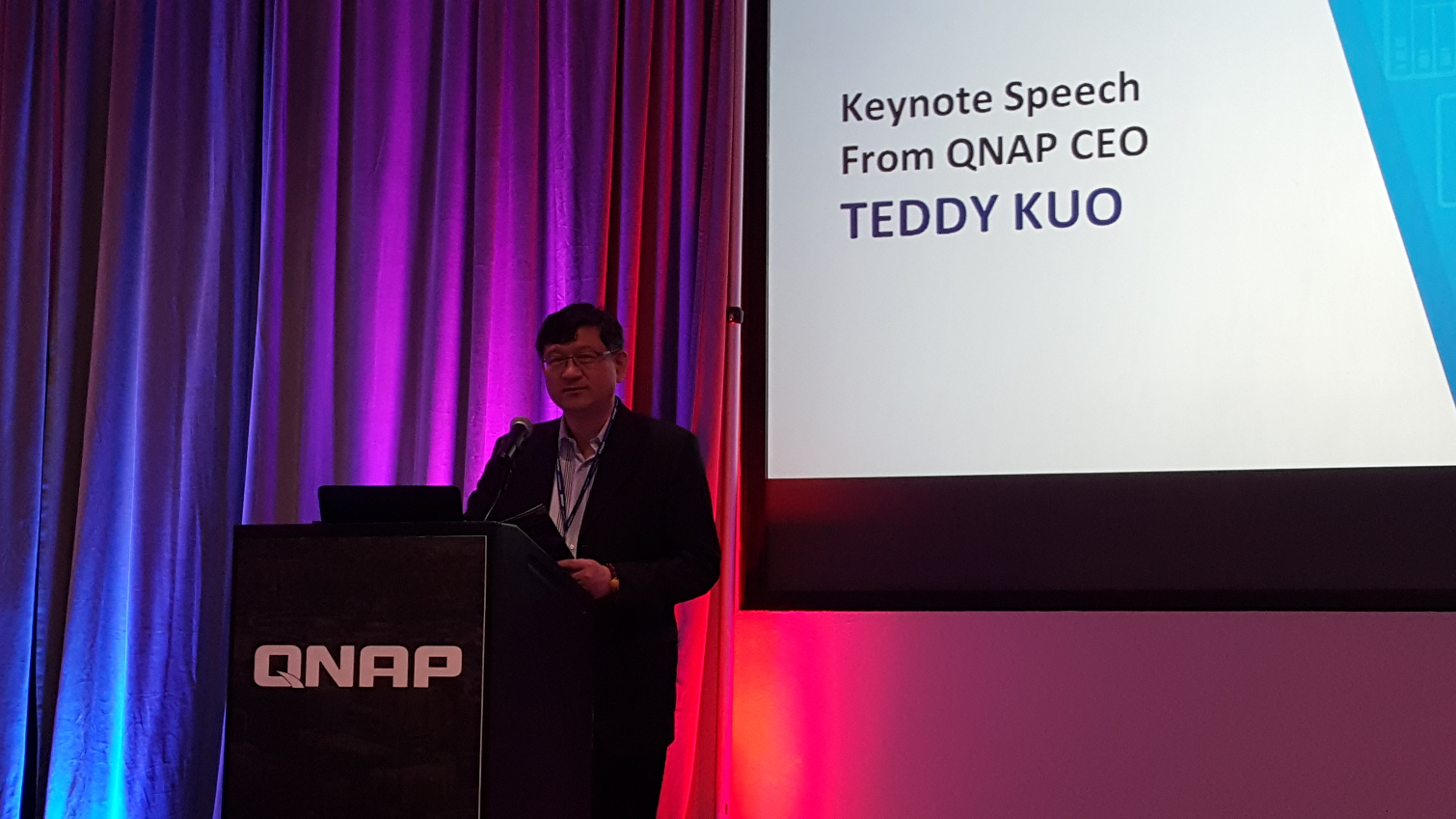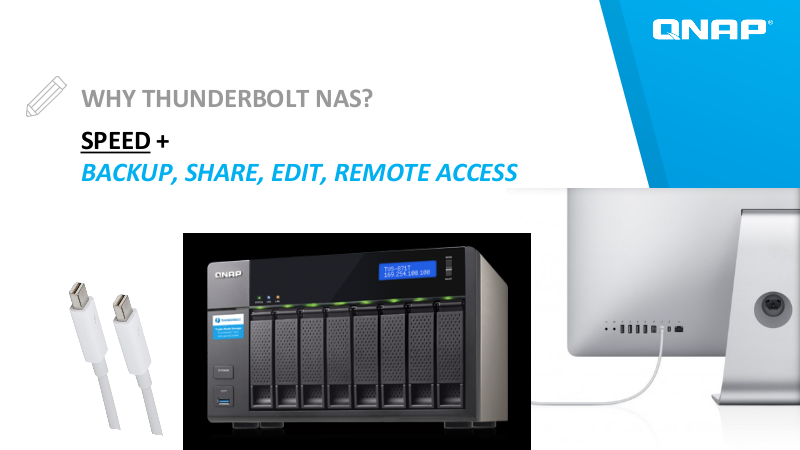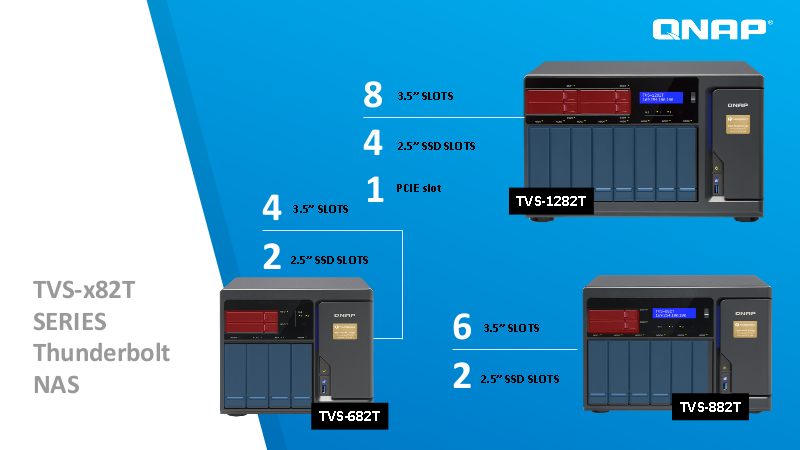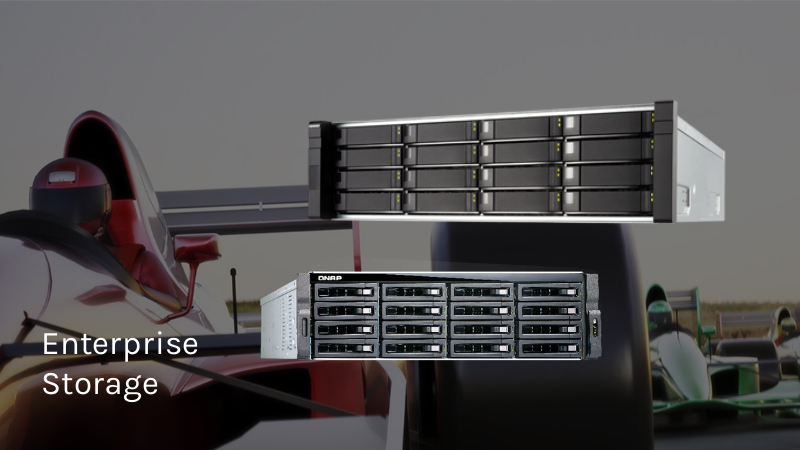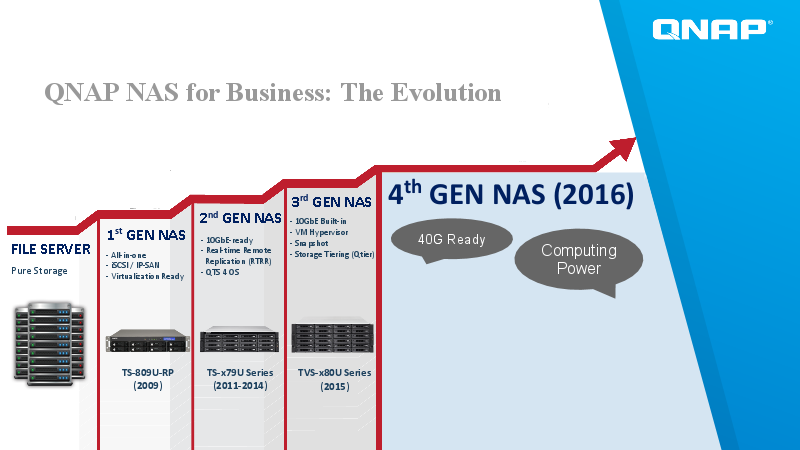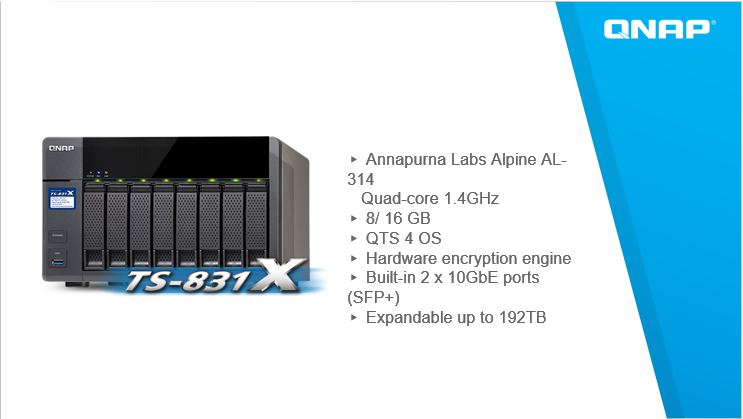QNAP Displays New TS-x82T Systems with Thunderbolt, Tiering and 10GbE
NAS manufacturers have to rely on other companies to build the underlying structure. ARM, Intel and Marvell build the central processing units, other companies build the system memory, and another set of companies build the network interface. The NAS manufacturers play the role of puzzle builder. Once the components are chosen, a glue must be applied (in this case everything holds together via software), and a frame built (the structure that keeps it all together).
Over the last three to four years, QNAP has proven to be the best puzzle builder. The company has reached into the box of pieces deeper to pull out components others have not attempted to implement. The pieces give QNAP products unique capabilities such as 40-gigabit Ethernet, software-managed SSD cache that automatically builds hot and cold data alignments, and Thunderbolt capabilities that open the door for a new breed of product.
Last week, QNAP invited us to take part in an internal celebration called Partner Day. At this event in San Jose, California QNAP gathered several top sales affiliates, company executives, and engineers that often work exclusively behind the scenes.
The event started off with a keynote speech from Teddy Kuo, QNAP's CEO. Unlike most CEOs with a spotlight, Mr. Kuo dove straight into the company message and the agenda on the table for the event. Everyone understood that this evening was to be about Thunderbolt capabilities and an aggressive entry into the software-defined datacenter.
Nearly a year ago, QNAP announced the TVS-871T, the world's first Thunderbolt-enabled NAS. The system combined the best connectivity options from both worlds of external, redundant storage. On the network-attached storage (NAS) side, the system utilizes 10-gigabit Ethernet. On the direct-attached storage (DAS) side, the system has Thunderbolt 2 with up to 20 Gbps of bandwidth.
The system won the Tom's Hardware Best NAS of Computex 2015, but I don't think even QNAP fully understood at the time how popular it would become. During the presentation, QNAP highlighted three companies using the TVS-871T today and how each utilized the system. Walt Disney Imagineering and NBC stood out to me, but VFX Studio Cantina Creative has been a customer since 2011. QNAP has been a behind-the-scenes player in the making of The Hunger Games, Pixels, Avengers and Captain America (among others).
QNAP's plan for the second half of 2016 expands on the capabilities of the TVS-872T with three new models that make up the TVS-x82T family. This series was built on a new chassis that enables greater expansion, new SSD cache tiering levels through NVMe, and support for 40-gigabit Ethernet (optional hardware purchase). The new product family also ushers in the HDMI 2.0 era with support for higher local playback resolutions and HDCP. The system also incorporates features from existing products such as storage capacity expansion through EX-500P / TX-800P JBOD enclosures.
Get Tom's Hardware's best news and in-depth reviews, straight to your inbox.
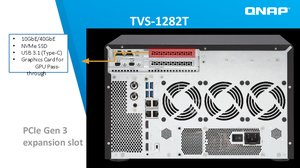
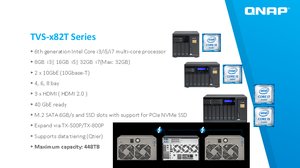
The three new products join the existing model released last year and make up the only high-performance NAS / DAS combination product available today. The selling point is that two local users can connect via Thunderbolt to each NAS and JBOD stack, but the data can be shared across the network simultaneously.
Three other new features stand out from any other prosumer NAS on the market: QNAP has rolled NVMe product support into the system via two internal PCIe slots. QNAP is the first and only company with NVMe in the prosumer category today. The same can be said about support for Mellanox's Connect-X 3 Pro 40GbE network interface cards. This system also supports two dynamic microphone inputs like we saw on the TS-453A, a lower cost version that we called "The First Karaoke NAS".
We didn't have time or the capabilities at the event to test the three new systems for performance capabilities, but we suspect end users will see a massive performance increase in all workloads. The systems now incorporate 2.5" hot swap bays on the front for loading SSDs as well as internal M.2 SSD support. Users can take advantage of the new flash-enabled capabilities by building an all-flash array and/or building a robust flash tier to use the ever-improving Auto Tier (autonomous SSD cache) function. If SATA-grade SSDs are not fast enough for your cache efforts, the inclusion of NVMe-protcol SSD cache via PCIe will certainly do the trick. We look forward to seeing the support list for NVMe-enabled devices, as some products already shipping scale to 6+ terabytes of data capacity.
The Commodity Datacenter
QNAP had previously announced the 4th generation enterprise hardware at CES this past January, but the new products put more of a focus on enterprise-focused features. This hardware first bred the inclusion of 40GbE and Auto Tiering in the QNAP product lineup, and the technology trickled down to the prosumer products.
The two new systems, TDS-16489U and ES1640dc, appear to be similar but take two different approaches to breaking into a new tier in the datacenter.
The TDS-16489U builds on QNAP's QTS Linux-based software stack that has evolved over the years to support most of the company's products. The ES1640dc uses QNAP's new QES Enterprise software that is based on FreeBSD and takes advantage of the ZFS file system first introduced by Sun Microsystems.
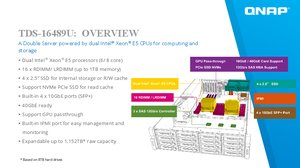
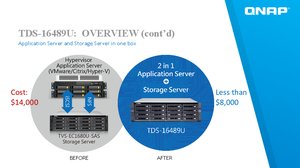
Both systems use Intel Xeon E5 class processors, but the ES1640dc is the first active-active controller architecture from QNAP. The configuration allows QNAP to move deeper into the datacenter or to bring datacenter features into smaller organizations that want datacenter features without the commensurate price tag and complexity.
QNAP demonstrated the active-active architecture feature in a live demo at the event. While the system recorded TPC-C transactions, one of the network cables was removed, but the data continued to flow through the other half of the system. This is not a feature unique to the ES1640dc, but this is the first system in this price class to support true active-active failover.
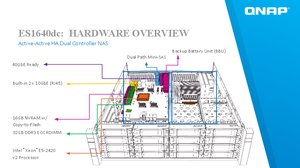
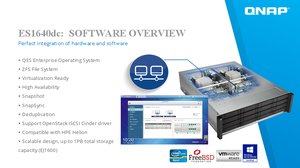
Value-Focused 8-Bay TS-831X
Near the end of the event, QNAP unveiled a new consumer / prosumer model that will enter the market next month. The upcoming TS-831X uses a low-power ARM-based Annapurna Labs Alpine AL-314 processor running at 1.4 GHz. We've tested other NAS with this processor before and found it to be capable of supporting high network performance bandwidth, but end users will be limited in other areas such as host-based video transcoding. This system should be the lowest NAS to feature eight drive bays. This allows users to store more data at a lower price point without paying for features that often go underutilized.
The new products will begin shipping as early as June 12, 2016.

Chris Ramseyer was a senior contributing editor for Tom's Hardware. He tested and reviewed consumer storage.
-
Xajel Are there any Home friendly versions of these beasts ? these are just expensive for any home user.. and includes a lot of un-needed tech's ( like 2x 10GbE ports, 2x 1GbE is more than enough for 99% of home users ).. and we can replace the thunderbolt with USB 3.1 gen 2 also saving cost, the CPU can be Pentium/Atom or even Fusion APUReply -
cletus_slackjawd Love it, my previous post apparently did go through. Cutting edge technology that will come into it's own before we know it. It's always good to see innovation and advancements even if it's overkill for the time beingReply -
cletus_slackjawd I think it's more of a technological look into the future. We'll eventually want this power in the home with vr, home automation, 8k tv's and whatever tech that takes off.Reply
